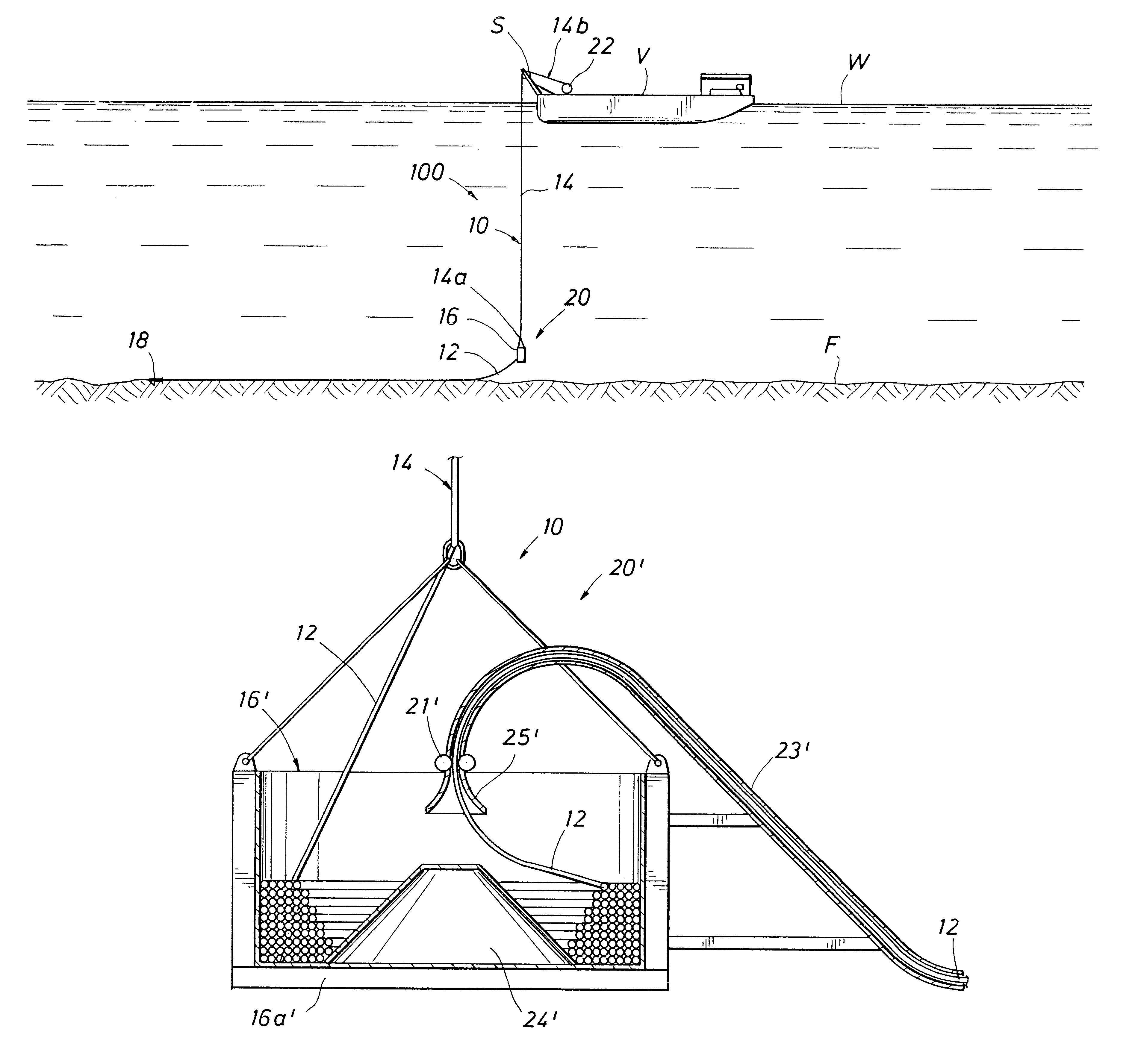Cable deployment system and method of using same
a deployment system and cable technology, applied in the field of cable deployment systems, can solve the problems of affecting the cost effectiveness of high-reliability installation, affecting the reliability of installation, and the laying of cable laying vessels that are not well suited to handling short cable lengths,
- Summary
- Abstract
- Description
- Claims
- Application Information
AI Technical Summary
Benefits of technology
Problems solved by technology
Method used
Image
Examples
Embodiment Construction
The cable deployment system 100 of the present invention will now be described in detail with reference to the drawings. Referring to FIG. 1, a cable, generally referred to as 10, includes a first cable section 12 and a riser cable section 14. Referring to FIGS. 1, 5, 6, 9 and 10, the first cable section 12 is coiled inside a drum 16, preferably cylindrical, of sufficient size to accommodate the allowable bend radius of the first cable section 12 and to hold the required length of the first cable section 12. As will be described below, the first cable section 12 has a length sufficient to form the desired cable layout on the sea floor F. The cylindrical drum 16, when fitted with the described equipment and instrumentation constitutes the submersible cable deployment system 20. The submersible cable deployment system 20 provides an integrated transportation and deployment system as will be explained below. It is to be understood that one embodiment of the submersible cable deployment...
PUM
 Login to View More
Login to View More Abstract
Description
Claims
Application Information
 Login to View More
Login to View More - R&D
- Intellectual Property
- Life Sciences
- Materials
- Tech Scout
- Unparalleled Data Quality
- Higher Quality Content
- 60% Fewer Hallucinations
Browse by: Latest US Patents, China's latest patents, Technical Efficacy Thesaurus, Application Domain, Technology Topic, Popular Technical Reports.
© 2025 PatSnap. All rights reserved.Legal|Privacy policy|Modern Slavery Act Transparency Statement|Sitemap|About US| Contact US: help@patsnap.com



